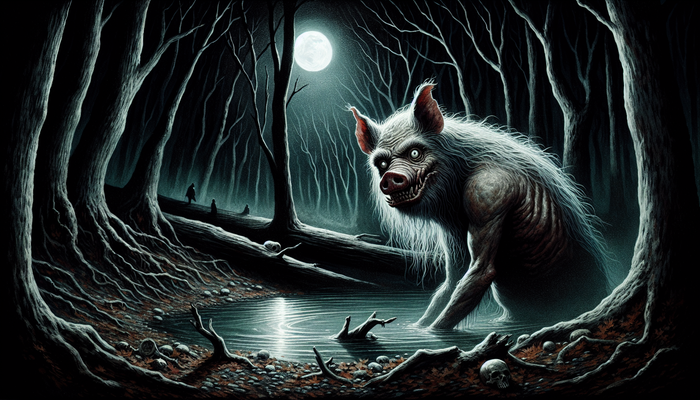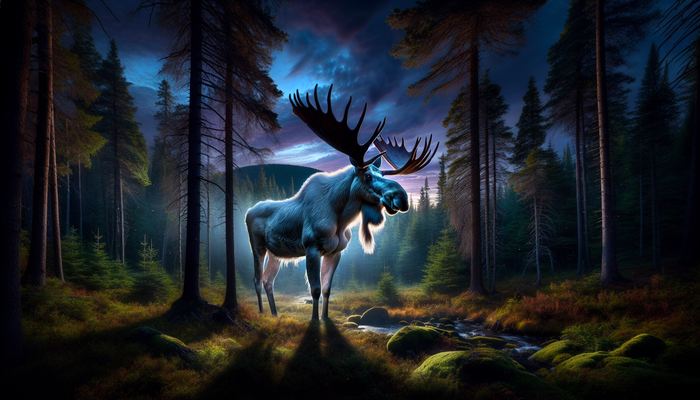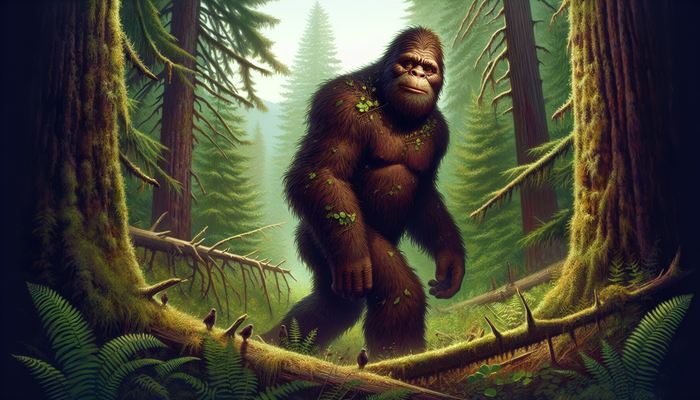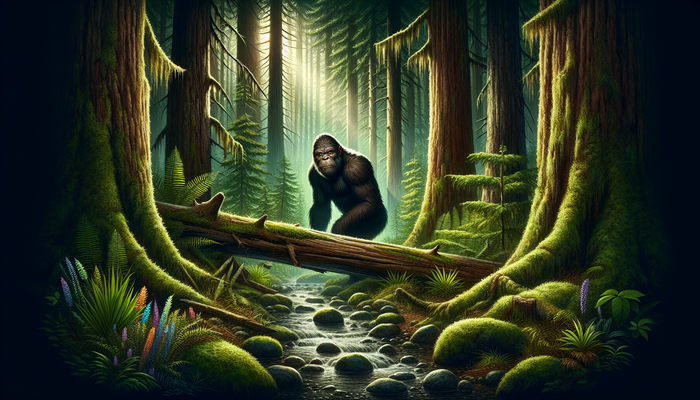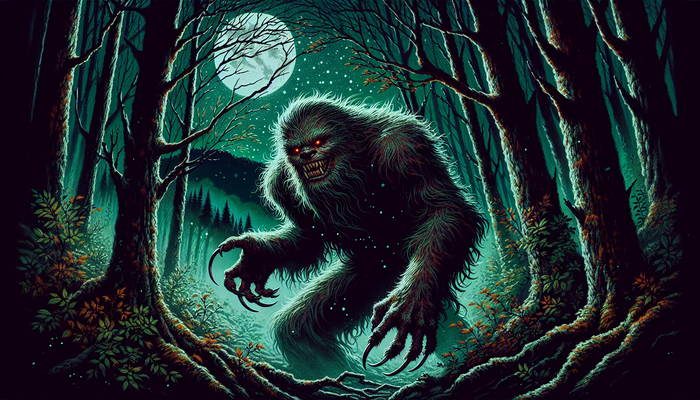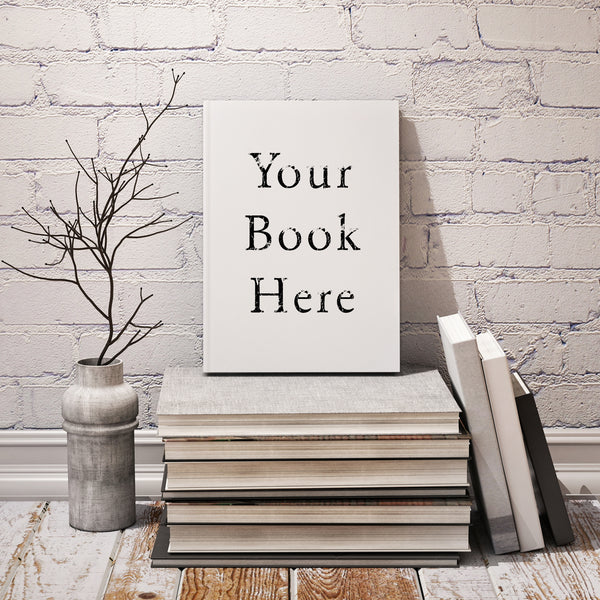Discovering Ivan T. Sanderson: The Pioneering Cryptozoologist

By Wade Beaumont, Cryptozoologist
In the shadowy realm where science meets folklore, where the known world brushes against the unexplained, there stands a figure both celebrated and controversial: Ivan Terence Sanderson. Born in 1911 in Edinburgh, Scotland, Sanderson would grow to become a pivotal force in the study of hidden animals, a field he himself christened "cryptozoology." His life's work would challenge the boundaries of zoological science and spark a global fascination with creatures lurking just beyond the edge of discovery.
Early Life and Education
Sanderson's journey into the world of mysterious beasts began in the most tragic of circumstances. As a young boy, he witnessed his father, a whisky manufacturer, meet a gruesome end at the hands—or rather, the horn—of a rhinoceros during a wildlife documentary filming in Kenya. This brush with nature's raw power didn't deter young Ivan; instead, it ignited a lifelong passion for the animal kingdom in all its forms, both known and unknown.
His formal education at Eton College and later at Cambridge University, where he graduated with honors in zoology, laid a solid foundation in scientific methodology. But it was Sanderson's insatiable curiosity and adventurous spirit that truly set him apart. He supplemented his academic pursuits with a yearlong globe-trotting expedition at the tender age of 17, focusing particularly on the mysterious corners of Asia. This blend of rigorous scientific training and a thirst for exploration would become the hallmark of Sanderson's approach to the natural world.
The Birth of Cryptozoology
The term "cryptozoology" first emerged from Sanderson's fertile mind in the late 1940s, a neologism that would come to define an entire field of study. Derived from the Greek "kryptos" meaning hidden, "zoo" for animal, and "logos" for study or knowledge, cryptozoology encapsulated Sanderson's mission: to shine a light on the animals that science had yet to classify, creatures that existed in the twilight between myth and reality.
Sanderson's 1961 magnum opus, "Abominable Snowmen: Legend Come to Life," stands as a testament to his dedication to this nascent field. The book wasn't merely a collection of fantastical tales; it was a meticulously researched tome that approached the subject of unknown hominids with scientific rigor. Sanderson posited the existence of not one, but four distinct types of "abominable snowmen" scattered across five continents. While his conclusions were met with skepticism from the mainstream scientific community, the book's impact on cryptozoology was undeniable.
Collaborations and Contemporaries
It's crucial to understand that Sanderson didn't work in isolation. His contemporary, the Belgian-French zoologist Bernard Heuvelmans, was simultaneously carving out his own niche in the field. Together, these two men laid the groundwork for cryptozoology as a discipline, blending scientific methodology with a willingness to explore the fringes of zoological knowledge.
Expeditions and Encounters
Sanderson's expeditions took him to the far corners of the globe, from the dense jungles of Africa to the misty mountains of South America. These weren't mere sightseeing trips; they were scientific endeavors aimed at collecting specimens for museums and gathering data on animal behavior. But Sanderson's genius lay in his recognition that local folklore and eyewitness accounts were valuable sources of information, often pointing the way to genuine biological discoveries.
The Kongamato Incident
One of Sanderson's most famous—and controversial—encounters occurred during his African expeditions. He claimed to have come face to face with the Kongamato, a creature he described as "the Granddaddy of all bats." According to Sanderson's vivid account, he was attacked by this enormous flying creature while attempting to retrieve a fruit bat he had shot. The incident left an indelible mark on Sanderson and fueled his belief in the existence of animals unknown to science.
The Minnesota Iceman Affair
However, it was the Minnesota Iceman affair that would prove to be a turning point in Sanderson's career. In the late 1960s, a mysterious frozen creature began making the rounds at carnivals and fairs across the American Midwest. Billed as a missing link or prehistoric human, the "Iceman" caught the attention of both Sanderson and Heuvelmans. Upon examination, both men were convinced of its authenticity, with Heuvelmans going so far as to propose a new species: Homo pongoides.
The excitement was short-lived. Subsequent investigations revealed that the Iceman was likely an elaborate hoax, a revelation that dealt a significant blow to Sanderson's credibility. The incident highlighted the challenges faced by cryptozoologists in distinguishing between genuine mysteries and clever fabrications. It also underscored the importance of maintaining scientific skepticism, even in the face of seemingly compelling evidence.
The Society for the Investigation of the Unexplained (SITU)
Despite this setback, Sanderson's passion for investigating the unexplained remained undiminished. In 1965, he founded the Ivan T. Sanderson Foundation, which would evolve into the Society for the Investigation of the Unexplained (SITU) two years later. SITU's mission extended beyond cryptozoology to encompass a wide range of anomalous phenomena, from UFO sightings to alleged psychic abilities.
SITU became a hub for researchers and enthusiasts alike, providing a platform for the exchange of ideas and evidence related to the unexplained. The organization's interdisciplinary approach reflected Sanderson's belief that the mysteries of our world required a holistic investigative method, one that drew from various fields of study.
Media Presence and Public Outreach
Sanderson's influence extended far beyond the realm of academic research. He was a prolific writer, penning numerous books and articles that brought the excitement of cryptozoological pursuits to a wider audience. His writing style was engaging and accessible, blending scientific observations with the thrill of adventure. This ability to communicate complex ideas to the general public made Sanderson a sought-after guest on radio and television programs.
In fact, Sanderson played a pioneering role in bringing natural history to the small screen. He appeared on "The World is Yours," the first regularly scheduled color TV series, where he introduced viewers to a menagerie of exotic animals. These media appearances not only popularized cryptozoology but also sparked public interest in the broader field of zoology.
The Vile Vortices Theory
Sanderson's intellectual pursuits weren't limited to hidden animals. He developed the concept of "vile vortices," a theory that proposed the existence of twelve geographic areas around the globe where anomalous phenomena seemed to cluster. The most famous of these was the Bermuda Triangle, but Sanderson's theory extended to include locations like the Devil's Sea off the coast of Japan and the South Atlantic Anomaly.
The vile vortices theory exemplified Sanderson's willingness to explore unconventional ideas. He suggested that these areas might be affected by electromagnetic anomalies or even serve as gateways to other dimensions. While the scientific community largely dismissed these notions, they captured the public imagination and continue to fuel speculation about Earth's mysterious hotspots.
Sanderson's Legacy and Impact
Sanderson's legacy in the field of cryptozoology is complex and multifaceted. On one hand, his work inspired generations of researchers to approach the study of unknown animals with scientific rigor. He demonstrated that the exploration of the unexplained could be pursued with academic seriousness, not just as a fringe hobby.
On the other hand, Sanderson's willingness to entertain fantastic possibilities sometimes led him to embrace ideas that strained scientific credibility. His endorsement of the Minnesota Iceman, for instance, serves as a cautionary tale about the need for skepticism and thorough verification in cryptozoological research.
Yet, it's important to recognize that Sanderson's approach was not entirely without merit. His emphasis on gathering local accounts and folklore has proven valuable in several instances where animals once thought mythical were later confirmed to exist. The mountain gorilla, once dismissed as a legend, was scientifically described in 1902. More recently, the saola, a forest-dwelling bovine from Vietnam and Laos, was unknown to Western science until 1992 despite being familiar to local inhabitants.
Sanderson's work also highlighted the importance of interdisciplinary research in the study of the unexplained. By drawing connections between zoology, anthropology, geology, and even physics, he encouraged a more holistic approach to investigating anomalous phenomena. This cross-pollination of ideas has led to innovative research methods and fresh perspectives on long-standing mysteries.
Modern Cryptozoology and Sanderson's Influence
The field of cryptozoology has evolved significantly since Sanderson's time, but his influence remains palpable. Modern cryptozoologists continue to grapple with the tension between open-minded exploration and scientific skepticism that characterized Sanderson's work. The advent of new technologies, from DNA analysis to thermal imaging, has provided researchers with powerful tools to investigate claims of unknown animals. Yet, the fundamental questions that drove Sanderson's inquiries persist: What undiscovered creatures might still lurk in the world's remote corners? How do we separate fact from fiction in reports of mysterious beasts?
Sanderson's life and work serve as a reminder of the importance of curiosity and wonder in scientific pursuit. While his more speculative ideas may not have stood the test of time, his willingness to venture into uncharted intellectual territory challenged the boundaries of zoological knowledge. In doing so, he opened up new avenues of inquiry and inspired others to look beyond the confines of established science.
The Continuing Relevance of Cryptozoology
As we continue to explore our planet's biodiversity, discovering new species in the depths of the oceans and the canopies of rainforests, we owe a debt to pioneers like Ivan T. Sanderson. His legacy encourages us to maintain a sense of wonder about the natural world, to question our assumptions, and to remain open to the possibility that there are still mysteries waiting to be uncovered.
The story of Ivan T. Sanderson is, in many ways, the story of cryptozoology itself—a tale of bold speculation, rigorous investigation, occasional missteps, and enduring fascination with the unknown. As we face unprecedented environmental challenges and rapid species loss, the work of cryptozoologists takes on new significance. By drawing attention to the possibility of undiscovered species, they remind us of the vast biodiversity that remains to be explored and protected.
Conclusion: The Enduring Spirit of Discovery
In the end, Sanderson's greatest contribution may not have been any single discovery or theory, but rather the spirit of inquiry he instilled in others. He showed that the pursuit of knowledge, even in the face of skepticism and ridicule, is a worthy endeavor. As we continue to push the boundaries of scientific understanding, we would do well to remember the lessons of Ivan T. Sanderson: to approach the unknown with both rigorous skepticism and an open mind, to value the wisdom of indigenous knowledge, and to never lose our sense of wonder at the mysteries that surround us.
The field of cryptozoology, like the creatures it seeks to study, continues to evolve and adapt. New methodologies, from environmental DNA sampling to satellite imagery analysis, are providing cryptozoologists with unprecedented tools to investigate claims of unknown animals. At the same time, the rise of social media and instant global communication has made it easier than ever for researchers to collect and share reports of strange sightings from around the world.
Yet, as technology advances, the fundamental challenges that Sanderson faced remain. How do we distinguish between genuine mysteries and misidentifications or hoaxes? How do we balance the need for scientific rigor with the open-mindedness required to consider unconventional possibilities? These questions continue to define the field of cryptozoology and ensure that Sanderson's legacy remains relevant in the 21st century.
As we reflect on the life and work of Ivan T. Sanderson, we are reminded that the pursuit of knowledge is not always a straightforward path. It requires courage to challenge established paradigms, humility to admit when we are wrong, and the persistence to continue asking questions even when answers seem elusive. In this sense, Sanderson's greatest gift to science may have been his unwavering curiosity—a quality that continues to inspire researchers and enthusiasts alike to explore the unknown corners of our world.
The story of Ivan T. Sanderson and the field of cryptozoology he helped establish is far from over. As long as there are unexplored wildernesses and unexplained phenomena, there will be those who follow in Sanderson's footsteps, seeking to shed light on the mysteries that lurk just beyond the edge of our understanding. In doing so, they keep alive the spirit of wonder and discovery that has driven scientific progress throughout human history.
From Bigfoot to UFOs: Hangar 1 Publishing Has You Covered!
Explore Untold Stories: Venture into the world of UFOs, cryptids, Bigfoot, and beyond. Every story is a journey into the extraordinary.
Immersive Book Technology: Experience real videos, sights, and sounds within our books. Its not just reading; its an adventure.



